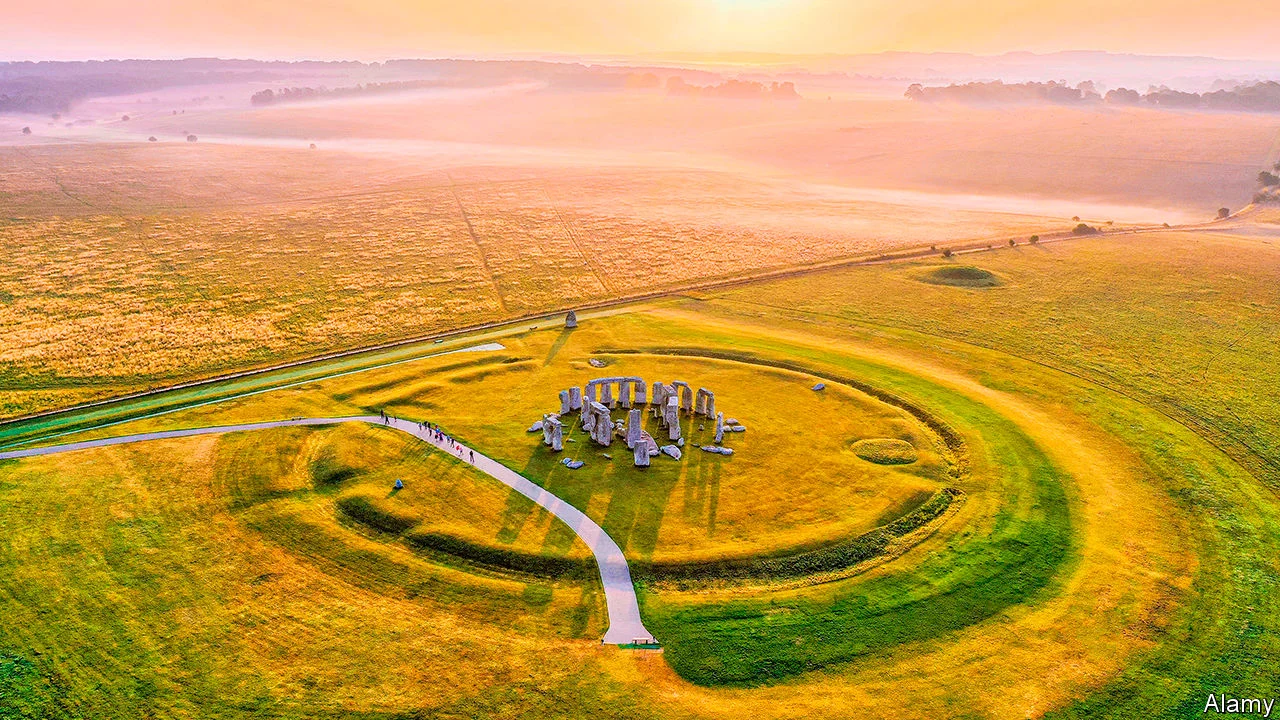Secrets of Stonehenge Revealed!
Stonehenge is a mysterious and awe-inspiring prehistoric monument in Wiltshire, England. For centuries, the enigmatic structure has captivated people around the world, inspiring many theories about its purpose and origin. In this blog post, we’ll uncover the secrets of Stonehenge and explore the fascinating history behind it.

The enigma of Stonehenge
For centuries, Stonehenge has been an archaeological enigma. The large stone monument located on Salisbury Plain in Wiltshire, England, is an iconic landmark that has mystified historians and archaeologists alike. Its purpose and the identity of its builder remain largely unknown. There have been numerous theories about why and how Stonehenge was built, but no one theory has been accepted as definitive.
The site consists of a ring of standing stones, each standing up to 4 meters high and weighing up to 25 tons. It was constructed from 3000 BC to 2000 BC and shows evidence of continuous use throughout this period. Recent excavations have revealed a buried timber structure beneath the stones.
Stonehenge has become an international tourist destination, drawing millions of visitors every year who come to experience its ancient mysteries firsthand. Many people visit Stonehenge in search of answers, but very few of them leave with any real understanding of the monument’s secrets. However, new discoveries have shed light on the history of Stonehenge and given us some clues as to what its purpose might have been.

Theories about who built Stonehenge
For centuries, the origins of Stonehenge have been shrouded in mystery. Archaeologists, historians, and other scholars have proposed various theories to explain who built this mysterious monument and why.
One of the most widely accepted theories is that Stonehenge was built by the ancient Druids. According to this theory, the Druids used the stones to create a temple to their gods and goddesses. While there is no archaeological evidence to support this theory, it remains popular with those who visit Stonehenge and who are drawn to the mysteries of the ancient past.
Another theory is that Stonehenge was built by an advanced civilization who had knowledge of astronomy and engineering. This theory states that Stonehenge was a kind of astronomical observatory, used to track the movements of the sun, moon, and stars. Proponents of this theory believe that Stonehenge was constructed as an ancient calendar, enabling its builders to determine important dates and times.
Yet another theory suggests that Stonehenge was an elaborate burial site for ancient kings and queens. Archaeological evidence supports this theory, as many burial remains have been found at the site.
Regardless of its origins, Stonehenge is a testament to the ingenuity and resourcefulness of our ancestors. There is still much more to learn about this mysterious monument, and visitors to Stonehenge may come away with a greater appreciation for the craftsmanship and culture that created this timeless wonder.

The purpose of Stonehenge
Stonehenge has remained a mystery since its discovery and theories about the purpose of the monument have been circulating since the 1600s. Many people believe that Stonehenge was used as a religious temple, while others believe it was an astronomical observatory. The most likely answer is that Stonehenge was built for a combination of reasons.
Recent archaeological discoveries suggest that Stonehenge may have been used as a burial ground and ritual site. During the early bronze age, around 3500 BC, cremated remains were buried near Stonehenge and could have been used to honour the dead.
The stones themselves are aligned in such a way that some believe it was created as an astronomical observatory. The stones line up with the rising sun on the solstices and equinoxes, which would make sense for a religion based on seasonal celebrations.
No one can be sure what the exact purpose of Stonehenge was and many of the secrets remain hidden. To get closer to the truth, why not visit Stonehenge for yourself? Seeing this incredible monument in person can provide you with a better insight into its mysterious past and its ancient secrets.

New discoveries about Stonehenge
Every year, archaeologists make new discoveries at Stonehenge that help us understand the ancient monument even better. In the last few years, archaeologists have uncovered evidence of a mysterious Neolithic timber circle and a ring of large wooden posts near the henge. The posts were constructed from oak trees that were felled more than 4,000 years ago, which suggests that Stonehenge had a longer and more complex history than was previously thought.
Other recent discoveries include evidence of animal sacrifice, as well as a prehistoric settlement located near Stonehenge. This settlement contains some of the oldest homes ever found in Britain, dating back to the late Mesolithic period (8,000-4,500 BC).
These fascinating new discoveries are just the beginning. Visiting Stonehenge is an amazing experience and a must-do for anyone who is interested in British prehistory. Not only is it a great opportunity to see the iconic stone circles, but you may also get a glimpse of some of the new discoveries that are still being made.





